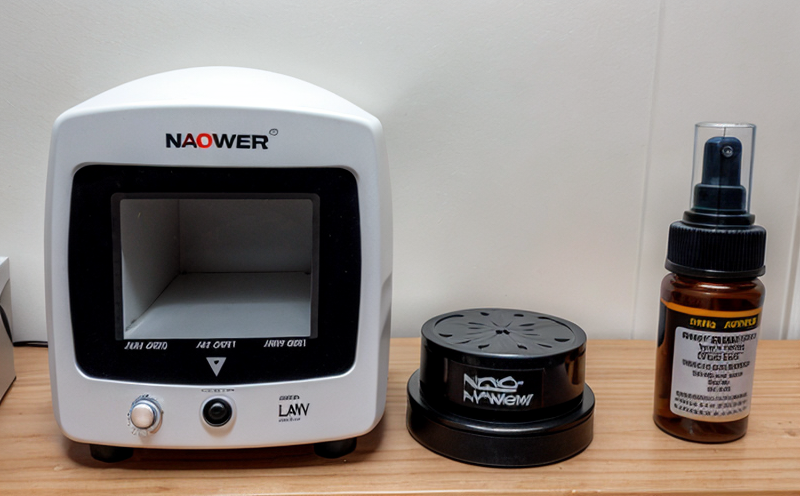ISO 3923 Bulk Density Measurement of Metal Nanopowders
The measurement of bulk density is critical in the development and quality control processes for metal nanopowders. ISO 3923 provides a standardized approach to determining the bulk density, which encompasses the volume occupied by the powder including inter-particle voids. This parameter is essential for understanding how nanoparticles will behave in various applications such as coatings, electronics, and pharmaceuticals.
The process involves several key steps that are meticulously outlined in ISO 3923. First, the nanopowders must be prepared according to specified standards to ensure uniformity of particle size and morphology. Once prepared, these powders are then packed into a container or vessel designed specifically for this type of measurement.
The bulk density is determined by measuring both the mass of the powder sample and the volume it occupies within the container. The formula used to calculate the bulk density is:
bulk density = mass of nanopowders / total volume occupied
This calculation requires precise measurement techniques, which can be achieved using various instruments like volumetric flasks or graduated cylinders calibrated according to ISO standards. It's also important to account for any residual air pockets that may affect the accuracy of the measurement.
The significance of this test lies in its ability to predict how well a nanopowder will flow during manufacturing processes, impact its reactivity with other materials, and influence its final product properties. For instance, in electronics applications, knowing the bulk density helps optimize circuit board design for better performance.
Moreover, compliance with such international standards ensures consistency across different batches of production, thereby enhancing reliability and trustworthiness among stakeholders including suppliers, regulators, and end-users.
In summary, conducting ISO 3923 bulk density measurements on metal nanopowders is not just about meeting regulatory requirements; it's an integral part of ensuring quality control throughout the supply chain. By adhering to these stringent guidelines, manufacturers can confidently produce high-quality products that meet industry expectations and customer demands.
Why It Matters
The importance of accurately measuring bulk density cannot be overstated when dealing with metal nanopowders due to their unique physical properties. These ultrafine particles exhibit different behaviors compared to larger particles, making precise measurement crucial for accurate prediction and control.
- Flowability: Understanding the flow characteristics allows for optimized handling during processing steps like mixing or coating.
- Packing Efficiency: Knowing how densely packed the powder is helps in minimizing waste by optimizing storage conditions.
- Reactivity: Bulk density can influence reactivity rates, which is vital information for chemical reactions involving these materials.
By leveraging accurate bulk density measurements through ISO 3923, manufacturers gain valuable insights into the behavior of their products under various environmental conditions. This knowledge translates directly into improved product performance and enhanced customer satisfaction.
In addition to internal quality assurance purposes, compliance with these standards is also necessary for regulatory approvals in countries where such regulations exist. Adhering to internationally recognized protocols fosters transparency and reliability, building trust among all parties involved in the supply chain.
Industry Applications
Nanopowders find extensive applications across multiple industries due to their exceptional properties at the nanoscale level. One significant area is electronics manufacturing where these materials are used in printed circuit boards (PCBs). Here, precise control over bulk density ensures optimal integration of components while maintaining structural integrity.
In the pharmaceutical sector, metal nanoparticles play a crucial role in drug delivery systems by providing targeted release mechanisms based on specific biological signals. Accurate measurements help optimize particle distribution within formulations ensuring consistent efficacy across different batches.
The automotive industry utilizes metallic nanomaterials for lightweighting applications such as improving fuel efficiency without compromising structural strength. Here again, reliable bulk density data contributes significantly towards achieving desired mechanical properties during design iterations.
For coatings and paints manufacturers, understanding the bulk density of metal nanoparticles enables better dispersion techniques enhancing both aesthetic appeal and protective qualities of final products.
Competitive Advantage and Market Impact
- Innovation Leadership: By adopting advanced testing methodologies like ISO 3923, companies can stay ahead in innovation by continuously improving product quality and performance.
- Better Customer Relationships: Consistent measurement results backed by rigorous standards build strong relationships with customers who value reliability and consistency.
- Regulatory Compliance: Ensuring adherence to international standards not only meets legal requirements but also demonstrates commitment to best practices, gaining competitive edge.
The ability to accurately measure bulk density contributes significantly to a company's reputation as a reliable partner in the industry. This translates into increased market share and long-term sustainability by fostering trust among all stakeholders involved from raw material suppliers to final consumers.





